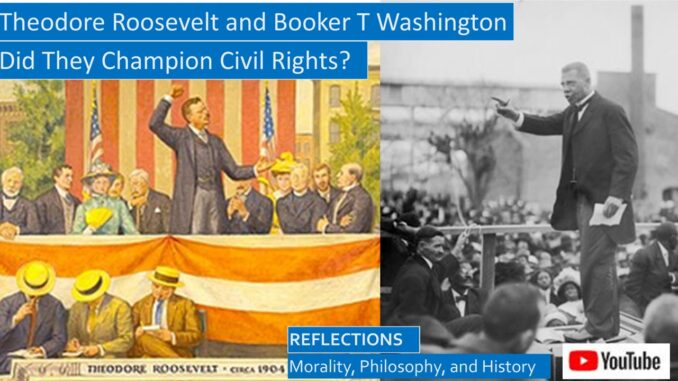
Was the Rough Rider President Theodore Roosevelt a proponent of civil rights? This question does not have a simple answer, except that in politics, as in relationships, the only proper answer is that it is complicated.
Theodore Roosevelt was a reforming President, his accomplishments included:
-
- Fighting monopolies by trust busting,
- Regulating the food and drugs sold to consumers,
- Conservation efforts including establishing national parks,
- Fighting corruption, and
- Promoting merit-based civil service.[1]
This YouTube video: https://youtu.be/iA5etBYdgC0
YouTube Script for this video, with more Amazon book links: https://www.slideshare.net/BruceStrom1/spartan-women-and-family-life-sayings-of-spartan-women-from-plutarchs-life-of-lycurgus
Soon after becoming President, he invited the black educator Booker T Washington to dinner in the White House to explore what progress could be made on civil rights. Roosevelt was stunned by the immediate vitriolic blowback from the Southern Press and politicians. He realized that if he attempted civil rights reforms that his entire reform package would be blocked, and he would accomplish nothing. But his Justice Department did attempt to litigate against the Deep South peonage, or convict labor abuses.
THEODORE ROOSEVELT, ROUGH RIDER
Theodore Roosevelt was not a man bound by class, which can be seen in the composition of the Rough Rider volunteer regiment unit he organized to fight in the Spanish American War. The newspaper publicity hyping his heroic charge leading his Rough Rider regiment up San Juan Hill made him a household name, eventually propelling him to the Presidency.
Roosevelt, like his distant cousin Franklin, was a member of the patrician class, which meant that, of course, he attended Harvard University. After serving in the New York State Legislature, Roosevelt was devastated when both his beautiful young wife Alice and his mother passed away on the same day, just two days after the birth of his daughter, also named Alice. For solace, he purchased a cattle ranch in North Dakota, developing many friendships among the rough riding cowboys in this western state. His rough rider recruits were an unlikely mix of wealthy blue-blooded aristocrats and rough and ready cowboys from the Badlands.[2]
Roosevelt’s Rough Riders were not the only regiment charging up San Juan Hill, history books often do not mention the role of the colored regiment Buffalo soldiers in the Spanish-American War.[3] During the war Roosevelt was chided for fraternizing with the enlisted men, this criticism makes more sense if he fraternized with both his Rough Riders and the Buffalo soldiers, which have an interesting history of their own.[4]
WILLIAM MCKINLEY IS ELECTED PRESIDENT
Before he ascended to the Presidency, Theodore Roosevelt was Vice President under the Republican William McKinley in his second term. McKinley had first been elected President in 1896, and during his first term, the economy was prosperous, and the United States was victorious in the Spanish-American War, adding the territories of Puerto Rico and the Philippines to the United States. Although he had condemned lynching and approved the recruiting of black officers in the Spanish-American War, fewer blacks were appointed to federal positions, and the federal government was reluctant to oppose violent white supremacists, even when they staged a coup and seized control of the local government in the Wilmington Insurrection of 1898.
For his reelection campaign of 1900, the popular Rough Rider and vigorous campaigner Theodore Roosevelt was tapped to be the Vice-Presidential candidate, since Vice President Garret Hobart had passed away. Six months into his second term, William McKinley was assassinated by a disgruntled anarchist, and Theodore Roosevelt was thrust into the Presidency.[5]
The first reports after the assassination attempt were that the President’s condition was improving, and he would likely recover. On the morning of Friday, September 13th, 1901, a messenger was sent to summon Theodore Roosevelt to return to Washington, but after several hours they discovered he had gone mountain climbing. Later that afternoon a guide informed him of the news on his descent. When he boarded a special train at dawn, he learned that President McKinley had succumbed to his wounds and infection.[6]
REPUBLICANS AND BOOKER T WASHINGTON
The foremost black leader of this time was Booker T Washington, who had risen from being an illiterate plantation field slave freed by the Northern victory in the Civil War to a leading educator and fund-raiser for Tuskegee Institute and other black colleges. When his mentor, General Armstrong of the Hampton Institute was asked by a member of the Alabama Legislature if he could recommend a white administrator to establish a new black trade school, he replied that he knew a very talented young black educator that would be perfect for the job, his former student, Booker T Washington.
Booker T Washington quickly discovered that the Alabama Legislature had only appropriated funds for teacher salaries, he was on his own to find some ramshackle classrooms. Tuskegee was a liberal college town, or liberal by Deep South standards, and he was able to locally raise funds for his black college trade school, the Tuskegee Institute, during the darkest times of the Jim Crow Redemptionist era when lynchings were rampant.
Booker T Washington knew from personal experience that not only were newly freed plantation slaves illiterate; they were also clueless about simple etiquette. Most freed field slaves knew nothing about table manners because they literally had neither owned nor eaten from a table their entire lives! Which meant that table etiquette was included in the curriculum.
Tuskegee Institute not only trained black educators; they were also taught useful trades, and they learned these trades by helping to build the schools, and they even learned how to fire the bricks to build the school in a brick kiln they constructed!
Very few black students had any money for tuition, so soon the financial needs of Tuskegee Institute outstripped the resources of local benefactors, so again with the help of his mentor General Armstrong, he started fundraising up North so Tuskegee Institute could expand its programs, often spending six month of the year speaking and fundraising among Northern businessmen and tycoons. The sales cycle for this fundraising was so long that he was forced to cater to the prejudices of his white benefactors, and was not free to offer the free-wheeling criticisms and protests of the more activist WEB Du Bois, who was a co-founder of the activist NAACP organization.
William McKinley was friendly to Booker T Washington and had visited Tuskegee Institute during his first term.[7] Henry Pringle writes, “Politically, the nomination depended largely on the control of the Southern delegates, who were, in 1901, still in Hanna’s hands.” Mark Hanna was Republican Senator and Chairman of the Republican National Committee with ties to big business who was McKinley’s campaign manager. “Roosevelt had arranged to visit Tuskegee Institute in the early fall and Booker T Washington had agreed to build a new Republican organization in the South, an organization based on character instead of patronage and bribery.” “A trip to Tuskegee had been planned for November 1901,” and he had been entertained either at Roosevelt’s home in Oyster Bay or at the White House prior to the famous dinner.[8]
In the years after the Civil War, the Republican Party had become more and more the party of Big Business, and less and less the party of civil rights, failing to defend due process and voting rights for black citizens. A cartoon by Puck (in our YouTube video) illustrates this vividly, we have the lone black man Booker T Washington leapfrogging in the bottom of the picture, dominated by several business tycoons, including Andrew Carnegie, who was the dominant philanthropist for Tuskegee Institute.
INVITING THE BLACK LEADER BOOKER T WASHINGTON TO HIS FAMILY WHITE HOUSE DINNER
On the day Roosevelt took the oath of office on the train at Buffalo, New York, he wrote to Booker T Washington requesting that they meet to discuss federal appointments for blacks. In late September Booker T Washington was invited to dine at the White House with the President and his family, discussing plans for the Deep South.
Our biographer Pringle states that Booker T Washington “felt that Roosevelt wanted to help not only the Negro, but the whole South.” But Roosevelt was totally ignorant of how Southerners would react, “for the President of the United States to entertain ‘a nigger’ was unforgivable. Having done so, Roosevelt could no longer hope that the South might be reconciled to the GOP.”
Pringle samples some of the reactions by the Deep South newspapers to Roosevelt’s White House dinner guest:
- “The New Orleans Time-Democrat demanded, ‘White men of the South, how do you like it? When Mr Roosevelt sits down to dinner with a Negro, he declares that the Negro is the social equal of the white man.’
- The Memphis Scimitar screamed that Roosevelt had perpetrated ‘the most damnable outrage ever.’
- The editor of the Richmond Times portrayed the President as believing that blacks and whites might even intermarry.”[9]
- The Democrat Senator Benjamin Tillman of South Carolina said that “we shall have to kill a thousand niggers to get them back in their places.”[10]
Roosevelt was stunned by the violent reactions to a simple dinner invitation; in the future, Booker T Washington would be received only during business hours. The Southern Republicans would never forgive Roosevelt for this unforgivable breach of racial etiquette, as multiple footnotes in Doris Kearns Goodwin’s biography attest.[11]
These attitudes did not disappear, during the Presidency of the Republican Herbert Hoover a similar incident occurred when his wife invited Jessie de Priest, wife of the newly elected black Congressman from Chicago, to tea along with the other white wives of congressmen. Again, vitriolic attacks from the Southern press.
https://en.wikipedia.org/wiki/Jessie_De_Priest_tea_at_the_White_House
Although Hoover did not have a stellar civil rights record, as we recounted in our video on the history of the NAACP and WEB Du Bois, the first lady held her ground and refused to snub and shun Jessie de Priest.
PEONAGE, CONVICT LABOR IN THE DEEP SOUTH
An issue usually excluded from the biographies of Theodore Roosevelt was a long-running civil rights legal struggle begun under his administration combatting the horrors of the peonage convict labor system of the Deep South, which was actually a system of random slavery which was often even more cruel than the plantation slavery before the Civil War. The Thirteenth Amendment has a loophole that permits the involuntary servitude of convicted prisoners, so Southern sheriffs would round up young black men on false vagrancy charges and sell their slave gang labor to the highest bidder, or to their friends. You can in the thumbnail that sometimes children were caught up in what were concentration camps that sometimes rivaled the Nazi work camps in their brutality and mortality rates. In some counties in Deep South Alabama, there were thousands of convict laborers slaving on dozens of plantations.
Even when cases were proven, Southern juries would not convict. The sources mention Attorney General Knox, but these cases must have had the enthusiastic approval of Roosevelt, though due to the reaction to inviting a black man to dinner dissuaded him from publicizing this struggle. The issue of peonage simmered, sometimes generating harsh newspaper headlines and state legislative investigating committee reports for several decades, but the system of peonage was not abolished until the New Deal administration of FDR, when embarrassing comparisons could be made to the Nazi concentration work camps.
WEB DU BOIS AND THEODORE ROOSEVELT
We found no indication that WEB Du Bois ever met with Theodore Roosevelt during his presidency or his campaigns, although he did introduce Roosevelt before one of his last speeches in 1918.[12] In his autobiography, WEB Du Bois does mention that Roosevelt attempted to break up the business trust monopolies, though the Supreme Court blocked his actions.[13]
After the intense push back by Southern segregationists of his dinner with Booker T Washington, it is credible that Theodore Roosevelt would back-pedal, appealing for white racial purity in a Lincoln Day Address in 1905. During a swing through the South later that year he “stressed his mother’s Southern birth, lectured Tuskegee undergraduates about the dangers of falling into crime, and derided African Americans as a ‘backward race.’”[14] The Roosevelt administration chose not to get involved in the white supremacist Atlanta Race Riots of 1906,[15] although the administration did approve a handful of black federal appointments.[16]
When Roosevelt was later running to be reelected as President under the Progressive Bull Moose Party in 1912, WEB Du Bois suggested in the Crisis magazine that a civil rights plank be included in the party platform, but Theodore Roosevelt did not want to be involved with the “dangerous” WEB Du Bois, who was both an activist and a contrarian.[17] Although the Progressive Party denied convention seats to African American delegates to appease the lily white Southerners, many blacks admired the Progressive proposals of an eight-hour workday, six-day work week, accident, old age and unemployment insurance, and female suffrage.[18]
BLACK BUFFALO SOLDIERS AND THE BROWNSVILLE AFFAIR
The minor civil rights gestures of the Roosevelt Administration were overshadowed by the tragic Brownsville Affair. The army foolishly transferred a battalion of black Buffalo soldiers from Nebraska to the Deep South segregationist town of Brownsville, Texas.
In her biography of Theodore Roosevelt, Doris Kearns Goodwin tells us about many minor confrontations, “black soldiers were forced off the sidewalk, hit with revolver butts, and denied access to public bars. Rumors of a black soldier assaulting a white woman in her home circulated. Then, just past midnight on August 14, a group of soldiers had allegedly entered town and fired into buildings, killing a saloon-keeper, and so grievously injuring the chief of police that his arm was later amputated. Eyewitnesses produced contradictory accounts: some claimed that the townspeople had fired first; other pointed to ‘colored soldiers in khaki and blue shirts’ as the aggressors. No one could identify any of the individual soldiers, all of whom had returned to their barracks immediately after the shootings.”
The more judicious Secretary of War and future President, Howard Taft, was away from Washington on official business when this crisis blew up, so it was handled by the impulsive President Theodore Roosevelt. These were tough soldiers, including several Medal of Honor recipients, and soldiers who served beside Roosevelt’s Rough Riders in the Spanish American War, and had battled the Sioux and Filipino guerillas. These tough soldiers would not break rank to reveal who among their ranks were guilty of these outrages.
So, President Roosevelt delivered on his threat to dishonorably discharge the entire 167-man battalion, which prevented them from reenlisting and from civil service positions. Taft eventually persuaded Roosevelt to soften his position, he revoked the provision preventing the discharged soldiers from civil jobs with the government and allowed individual soldiers who could prove they were not involved to be reinstated.
African Americans were universally appalled at this harsh sentence. Even Booker T Washington warned Taft that he had “never in all my experience with the race experienced a time when the entire people have the feeling that they now have in regard to the administration,” his associate said that Roosevelt’s “name would be anathema with Negroes from now on.” One black preacher lamented, “Once enshrined in our love as our Moses,” now Roosevelt “is now enshrouded in our scorn as our Judas.”[19]
The Brownsville Affair embittered WEB Du Bois, he declared in an article in the Horizon that “Theodore Roosevelt does not like black folk. He has no faith in them.” Stoking the coals, he asked, “What have we to thank Roosevelt for?” “For asking a black man to dine with him?” For appointing a few black men to federal positions? “For saying publicly that the door of opportunity ought to be held open for colored men?” But “Mr Roosevelt by his word and deed since has slammed” this door “most emphatically in the black man’s face.”[20]
What does Theodore Roosevelt say about this affair? He omits painful memories from his autobiography: he does not mention the death of his first wife, neither does he mention the White House dinner with Booker T Washington, and he also does not mention the Brownsville Affair in his autobiography.
SHOULD THEODORE ROOSEVELT’S STATUE HAVE BEEN REMOVED?
The New York Times reported in June 2020 that “the bronze statue of Theodore Roosevelt, on horseback and flanked by a Native American man and an African man, which has presided over the entrance to the American Museum of Natural History in New York since 1940, is coming down.” “For many, the equestrian statue at the museum’s Central Park West entrance has come to symbolize a painful legacy of colonial expansion and racial discrimination.” In the near future, it will be moved to and displayed on the grounds of the Theodore Roosevelt Library in Medora, North Dakota.[21]
Local citizens certainly have the right to decide which statues will be displayed in their city, and you can argue either that the figures of the Indian and the black man represent racial equality or subservience. IMHO, statutes that were not symbolic of Jim Crow oppression should be left standing, we should be reluctant to condemn too harshly historic figures who held opinions considered objectionable by today’s standards. After all, neither Plato or Aristotle condemned slavery.
Theodore Roosevelt was not immune to the prejudices of his age; he admired the notion of Rudyard Kipling of the White Man’s burden in spreading colonialism to the ignorant masses. As Assistant Secretary of the Navy, he had authorized the seizing of the Philippine Islands at the beginning of the Spanish American War, and as we noted, the Black Buffalo soldiers were among the forces fighting Filipino forces seeking independence. Lewis’ footnote is not clear about the source, but perhaps Theodore Roosevelt did say, “A perfectly stupid race can never rise to a very high plane; the negro, for instance, has been kept down as much by lack of intellectual development as by anything else.”[22]
Roosevelt wrote an article on “Brazil and the Negro” after his trip there in 1914. Although he commended the lack of a color bar in Brazilian society, he did “claim that Brazilians regarded the ‘Negro element’ in their blood as a slight weakening.”[23] Colonialism was finally doomed when World War II proved how little security Great Britain could provide when the Japanese forces attacked her Asian colonies and threatened Australia and India.
DISCUSSION OF THE SOURCES
Henry Pringle wrote the definitive biography of Theodore Roosevelt, but Doris Kearns Goodwin always finds a unique perspective that reveals interesting details not found in other biographies. In The Bully Pulpit, she tells the biographies of both Theodore Roosevelt and William Howard Taft, who were friends and close associates during his Presidency, when Taft was Secretary of War, but became bitter rivals when Theodore Roosevelt ran against him in 1912 as a third-party candidate for the Progressive Bull Moose Party, throwing the election to Woodrow Wilson and the Democrats. Her biography also focuses on Roosevelt’s alliance with the muckraking journalists that helped sell his many reforms.
The autobiographies of Booker T Washington, WEB Du Bois, and Theodore Roosevelt are captivating. In our series of videos on WEB Du Bois, we used his autobiography as the primary source for his youth and college days but used David Levering Lewis’ biography as a primary source for his activist career, since it includes a coherent history of the NAACP which WEB Du Bois co-founded, and for many of the quotes in this video.
[1] https://en.wikipedia.org/wiki/Square_Deal and https://en.wikipedia.org/wiki/Theodore_Roosevelt
[2] https://en.wikipedia.org/wiki/Theodore_Roosevelt
[3] https://www.nps.gov/prsf/learn/historyculture/buffalo-soldiers-and-the-spanish-american-war.htm and https://en.wikipedia.org/wiki/Battle_of_San_Juan_Hill
[4] https://en.wikipedia.org/wiki/Buffalo_Soldier
[5] https://en.wikipedia.org/wiki/William_McKinley
[6] Henry Pringle, Theodore Roosevelt, A Biography (New York: Harvest Book, Harcourt Brace, 1931, 1984), p. 163.
[7] https://en.wikipedia.org/wiki/William_McKinley
[8] Henry Pringle, Theodore Roosevelt, A Biography, p. 161 and https://en.wikipedia.org/wiki/Mark_Hanna
[9] Henry Pringle, Theodore Roosevelt, A Biography, pp. 174-175.
[10] https://en.wikipedia.org/wiki/Booker_T._Washington_dinner_at_the_White_House and Doris Kearns Goodwin, The Bully Pulpit (New York, Simon and Schuster, 2013), p. 321.
[11] Doris Kearns Goodwin, The Bully Pulpit, pp. 381, 513.
[12] WEB Du Bois, Autobiography of WEB Du Bois (Canada International Publishers, 1968, 2007), p. 269.
[13] WEB Du Bois, Autobiography of WEB Du Bois, pp. 207-208.
[14] David Levering Lewis, A Biography, WEB Du Bois (New York: Holt Paperback, 2009), p. 223.
[15] David Levering Lewis, A Biography, WEB Du Bois, p. 225.
[16] David Levering Lewis, A Biography, WEB Du Bois, p. 263.
[17] WEB Du Bois, Autobiography of WEB Du Bois, pp. 263-264.
[18] David Levering Lewis, A Biography, WEB Du Bois, pp. 276-277.
[19] Doris Kearns Goodwin, The Bully Pulpit, pp. 511-515 and David Levering Lewis, A Biography, WEB Du Bois, pp. 223-224.
[20] David Levering Lewis, A Biography, WEB Du Bois, p. 228.
[21] https://www.nytimes.com/2020/06/21/arts/design/roosevelt-statue-to-be-removed-from-museum-of-natural-history.html and https://en.wikipedia.org/wiki/Equestrian_Statue_of_Theodore_Roosevelt_(New_York_City)
[22] David Levering Lewis, A Biography, WEB Du Bois, p. 191.
[23] David Levering Lewis, A Biography, WEB Du Bois, p. 313.

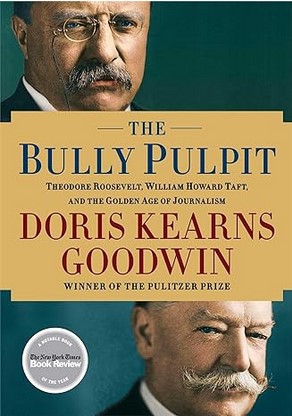
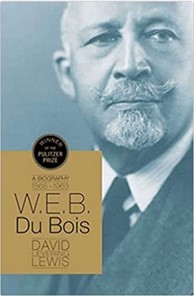
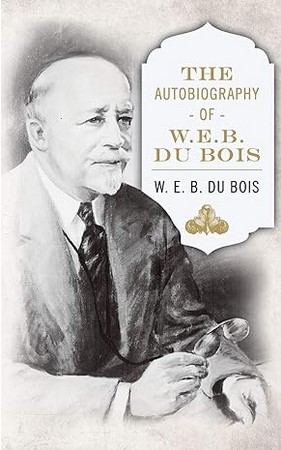
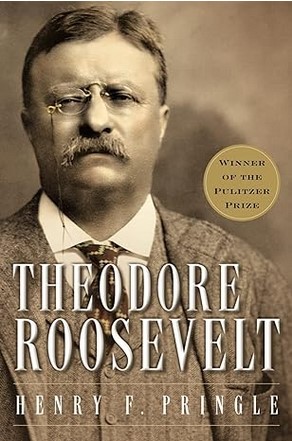
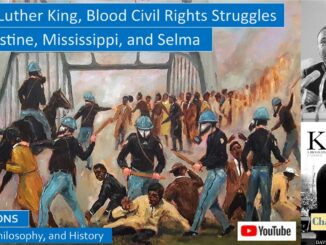
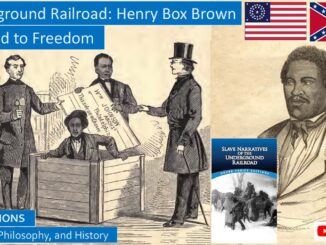
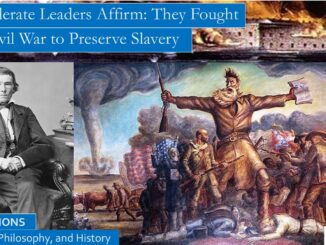
Be the first to comment